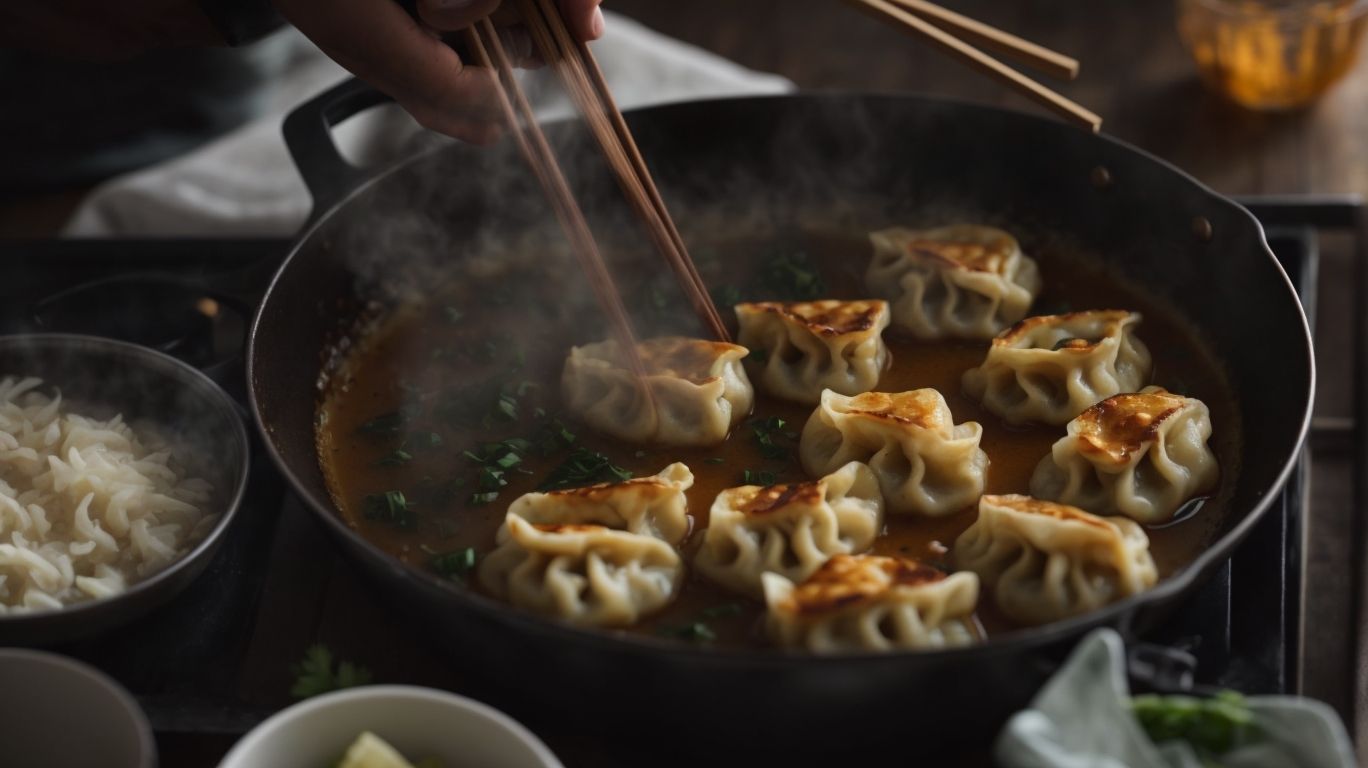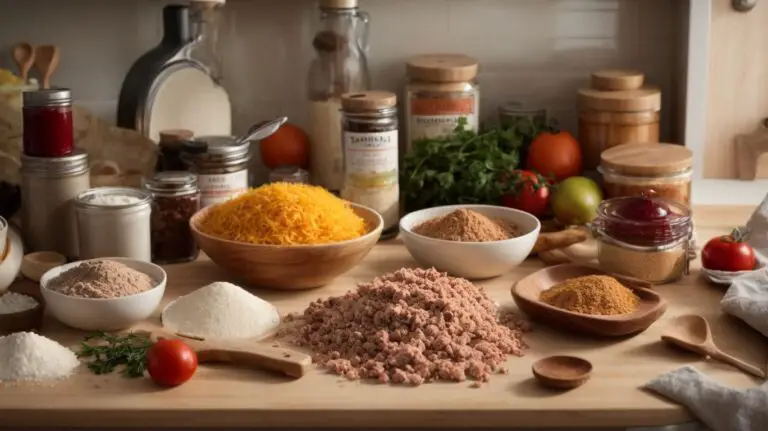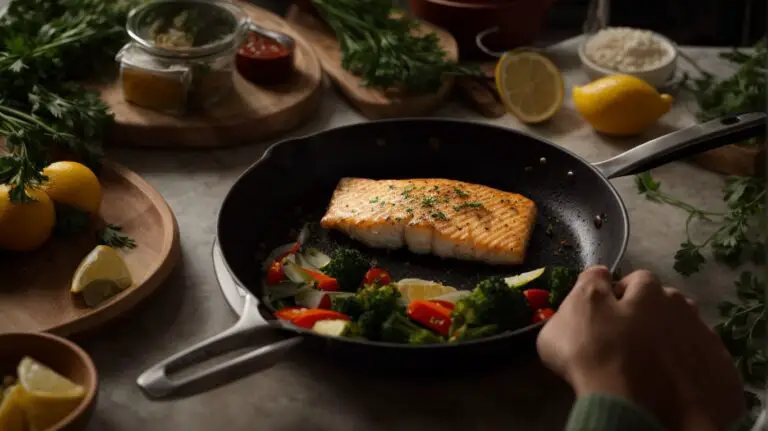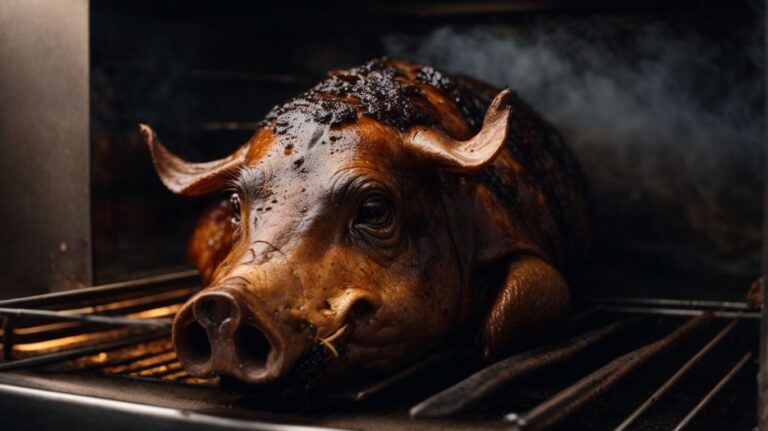How to Cook Gyoza on a Pan?
Are you a fan of Japanese cuisine? Have you ever tried Gyoza?
Discover everything you need to know about Gyoza – from its origins and different types, to the ingredients needed to make this delicious dish.
Learn a step-by-step guide on preparing the filling, wrapping the Gyoza, cooking it on a pan, and serving it with the perfect dipping sauce.
Stay tuned for expert tips and techniques on cooking Gyoza like a pro!
Key Takeaways:
What is Gyoza?
Gyoza, also known as potstickers, are Japanese pan-fried dumplings that have become popular worldwide for their unique taste and filling.
Originating in Japan, gyoza is a dish deeply rooted in Japanese culinary tradition. These delectable dumplings are typically filled with a mixture of ground meat, vegetables, and seasonings, wrapped in thin dough, and then pan-fried to perfection. While they share similarities with Chinese dumplings, gyoza often have a thinner skin, a more garlicky flavor in the filling, and a signature crispy bottom from the pan-frying process. Regional variations of gyoza can be found across Japan, with each area adding its own twist to the classic recipe.
Origin of Gyoza
The origin of Gyoza can be traced back to Japan, where it was inspired by Chinese dumplings and adapted to suit Japanese culinary preferences.
Osaka, Japan, is often acknowledged as the birthplace of Gyoza. This delicious dish made its way to Japan through the Chinese traders during the late 19th century, evolving over time to become a staple in Japanese cuisine. Gyoza were initially referred to as ‘Chinese pan-fried dumplings’ in Japan, showcasing the early influence of Chinese culinary traditions. Japanese chefs quickly started incorporating their techniques and ingredients, such as garlic, cabbage, and sesame oil, leading to the creation of a distinctive Japanese-style Gyoza.
Types of Gyoza
There are various types of Gyoza available, ranging from traditional Japanese dumplings to modern interpretations with innovative fillings and cooking techniques.
Traditional Japanese Gyoza, known as ‘Yaki Gyoza,’ are typically filled with a blend of minced pork, cabbage, garlic, ginger, and scallions, wrapped in a thin wheat dough, pleated and then commonly pan-fried to achieve a crispy texture on one side.
On the other hand, fusion adaptations of Gyoza have emerged in recent years, incorporating ingredients like shrimp, chicken, tofu, or even exotic fruits, challenging the conventional notions of these dumplings.
Innovative cooking methods for Gyoza include lid-steaming after pan-frying to ensure a juicy interior while maintaining a crisp bottom, creating a delightful contrast in texture.
Ingredients for Gyoza
Creating delicious Gyoza requires a careful selection of ingredients, such as fresh wrappers, flavorful fillings, and essential seasonings like soy sauce and ginger.
For the wrappers, you will need all-purpose flour, hot water, and a pinch of salt to achieve that perfect texture – not too chewy or brittle. The filling is where the magic happens; quality minced pork is a must for that juicy, savory taste, complemented by finely chopped cabbage for that refreshing crunch.
Regarding seasoning your Gyoza, soy sauce adds that classic umami depth, while garlic and sesame oil bring a delightful aroma that enhances the overall flavor profile. Don’t forget to add some green onions for a hint of freshness and color – a quintessential element in traditional Gyoza.
Wrapper Ingredients
Gyoza wrappers can be either homemade using simple ingredients like all-purpose flour or purchased ready-made for convenience and time-saving.
When opting for homemade wrappers, the process involves creating a smooth dough by combining all-purpose flour and water. Kneading the dough until it’s elastic and letting it rest covered for about 30 minutes are crucial steps. Afterwards, rolling out the dough into thin circles and using a cutter or a circular object to create uniform wrappers ensures even cooking.
Regarding folding techniques for gyoza, there are various methods such as pleating, crimping, or using a fork to seal the edges. The key is to achieve a tight closure to prevent the filling from spilling out during cooking. Whether you prefer a delicate, thin wrapper for a light texture or a slightly thicker one for a chewier bite, the folding technique plays a significant role in the final result.
Filling Ingredients
The filling for Gyoza typically consists of a savory mixture of ground pork, fresh cabbage, umami-rich shiitake mushrooms, and a blend of seasonings for enhanced flavor.
When preparing Gyoza, the combination of ingredients plays a crucial role in creating a harmonious balance of taste and texture. The ground pork provides a rich and juicy element, while the fresh cabbage brings a subtle crunchiness to the filling. Shiitake mushrooms add depth and umami flavors, elevating the overall profile of the mixture. Soy sauce contributes saltiness and depth, while ginger brings a hint of spice and aroma.
Preparing the Gyoza Filling
Preparing the Gyoza filling involves mixing fresh ingredients like ground pork with aromatic seasonings such as garlic and ginger for a flavorful and well-balanced taste.
Once you have gathered the necessary components, begin by finely mincing the garlic and ginger, as these will serve as the foundational flavors of the filling. Proper seasoning is key to achieving the ideal taste profile, so be generous with ingredients like soy sauce, sesame oil, and a hint of sugar to enhance the flavors.
Combine the ground pork with the minced garlic, ginger, soy sauce, sesame oil, and a pinch of sugar in a mixing bowl. Use your hands to thoroughly mix the ingredients, ensuring even distribution of flavors.
It’s crucial to taste-test the mixture along the way to adjust the seasoning levels until you achieve a harmonious and bold flavor that will elevate your Gyoza to the next level.
Mixing the Filling Ingredients
Mixing the Gyoza filling involves combining fresh ingredients like shiitake mushrooms, seasonings, and ground meat to create a harmonious blend of flavors and textures.
Start by finely chopping the shiitake mushrooms to ensure they distribute evenly throughout the filling, imparting their rich umami flavor. Next, add the mushrooms to a bowl with the ground meat, typically a mixture of pork and cabbage, for a moist and succulent texture.
When seasoning the mixture, it’s crucial to strike a balance. Common seasonings include soy sauce, sesame oil, garlic, and ginger, which enhance the overall taste profile without overpowering the delicate flavors of the other ingredients. The key is to season gradually, tasting as you go to adjust according to your preferences.
How to Properly Season the Filling
Properly seasoning the Gyoza filling involves using a blend of soy sauce, ginger, and other seasonings to enhance the natural flavors of the pork and other filling ingredients.
Regarding soy sauce, its umami-rich profile adds a depth of flavor that complements the savory notes of the pork. The ginger, with its zesty and slightly spicy kick, brings a refreshing element to the filling, balancing out the richness of the meat. Along with these key players, you can experiment with other seasonings like garlic, sesame oil, and green onions to further elevate the taste profile.
Remember, seasoning is not just about adding salt; it’s about layering flavors to create a harmonious blend that delights the taste buds. Be mindful of the proportions of each seasoning to ensure a balanced and well-rounded filling that truly shines when encased in the delicate Gyoza wrapper.
Wrapping the Gyoza
Wrapping Gyoza requires skillful folding techniques to create pleats that seal the filling securely within the delicate wrappers for a visually appealing presentation.
When wrapping Gyoza, one common method is to start by placing a small amount of filling in the center of the wrapper. Next, dip your finger in water and moisten the edges of the wrapper. This helps in sealing the Gyoza properly. Then, fold the wrapper in half and create a series of small pleats along the sealed edge. The pleating not only enhances the aesthetic appeal but also ensures that the Gyoza holds together during the cooking process. Press firmly to seal the dumpling completely, resulting in a well-crafted and delicious Gyoza ready for cooking.
Step-by-Step Guide to Wrapping Gyoza
A step-by-step guide to wrapping Gyoza involves carefully folding the wrappers around the filling, creating neat pleats and ensuring a secure seal to prevent any leakage during cooking.
After placing a small amount of filling in the center of the wrapper, start by moistening the edges with water to help them stick together. Next, fold the wrapper in half over the filling, pressing the edges firmly to seal. Now comes the crucial part – pleating the edges. Pleating not only adds a decorative touch but also helps in providing a tight seal. To pleat, make a series of small folds along one side of the wrapper, pressing each fold tightly against the edge to create a secure closure.
Cooking Gyoza on a Pan
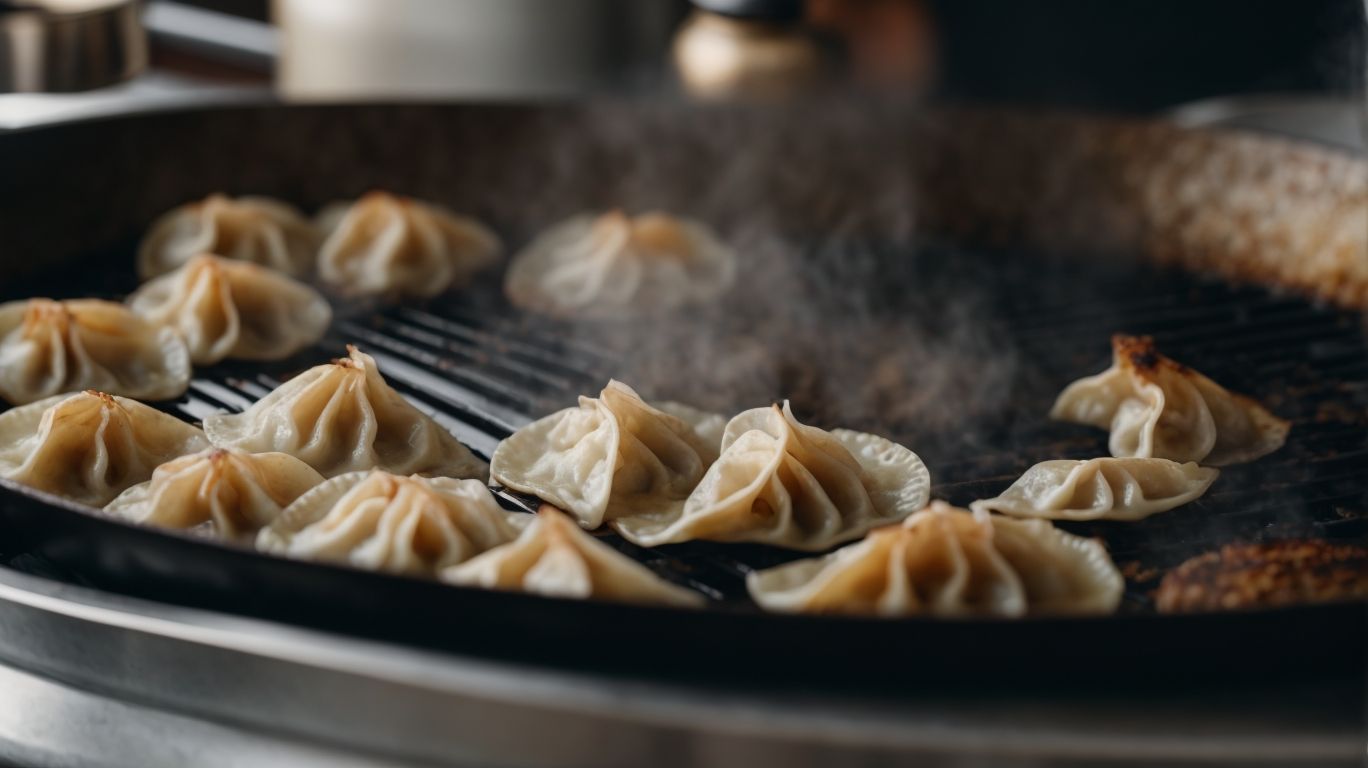
Credits: Poormet.Com – Henry Rivera
Cooking Gyoza on a pan involves a combination of pan-frying and steaming to achieve crispy bottoms and tender, flavorful fillings, often served with a side of chili oil for added spice.
If you want to recreate this delicious dish at home, start by heating some oil in a non-stick pan over medium heat. Place the Gyoza in a circular pattern, ensuring they are not overcrowded, allowing their bottoms to crisp up evenly. Once the bottoms are golden brown and crunchy, carefully pour in a small amount of water into the pan, creating steam to cook the tops of the Gyoza. Cover the pan with a lid to trap the steam, ensuring that the fillings cook through and the wrappers become soft and translucent.
The dual technique of pan-frying and steaming results in a delightful contrast of textures – the crispy base providing a satisfying crunch, while the steamed tops retain moisture and flavor. To elevate the taste profile further, drizzle some chili oil over the cooked Gyoza or serve it in a dipping sauce for an extra kick of heat. This addition not only enhances the overall flavor but also adds a subtle spiciness that complements the savory filling perfectly.
Best Types of Pans to Use
For cooking Gyoza, it is recommended to use a well-seasoned pan with a tight-fitting glass lid to ensure even heat distribution and proper steaming, following a comprehensive cooking guide for best results.
When preparing Gyoza, the seasoning of the pan plays a crucial role in enhancing the flavors of the dish. The seasoned surface helps prevent sticking and promotes a beautiful crust on the dumplings. The use of a glass lid traps steam effectively, aiding in the cooking process by ensuring the filling cooks through and the wrapper becomes tender.
Proper heat management is key; start by searing the Gyoza on a medium-high heat, then add water to the pan and cover with the glass lid to steam the dumplings to perfection. This method retains moisture and results in a delightful blend of textures.
How to Properly Heat the Pan
Properly heating the pan before cooking Gyoza is essential to achieve the desired crispy texture and prevent sticking, requiring careful attention to heat control and timing for optimal results.
When heating the pan for Gyoza, start by placing it over medium heat and allowing it to warm up gradually for about 3-5 minutes. This ensures even heat distribution and prevents hot spots that can lead to uneven cooking. To prevent sticking, a helpful tip is to add a thin layer of oil once the pan is properly heated. The oil acts as a barrier between the Gyoza and the surface of the pan, promoting a golden, crispy bottom.
Techniques for Cooking Gyoza on a Pan
Mastering the techniques for cooking Gyoza on a pan involves achieving a delicate balance of steaming and pan-frying to create tender fillings and crispy bottoms that delight the senses.
When preparing Gyoza, ensuring the fillings are properly cooked while maintaining the crispiness of the bottoms is a skill that requires attention to detail. Texture plays a crucial role in determining the success of your Gyoza dish, with the ideal result being a harmonious blend of soft and crunchy elements.
By steaming the dumplings first, you lock in moisture, keeping the fillings succulent. Then, transitioning to the pan-frying stage adds that sought-after crispy exterior, delivering a delightful contrast in every bite.
Serving and Enjoying Gyoza
Serving and enjoying Gyoza is a delightful experience that can be enhanced with a variety of dipping sauces and additional tips for achieving the perfect balance of textures and flavors.
When indulging in Gyoza, the choice of dipping sauce plays a crucial role in elevating the overall taste profile. The most popular options include soy sauce mixed with rice vinegar, chili oil, or even a combination of the two for a delectable kick. These sauces offer a blend of salty, tangy, and spicy notes that complement the savory fillings of the dumplings perfectly, creating a harmonious explosion of flavors.
For a creative twist, consider serving Gyoza with a side of refreshing cucumber salad or pickled vegetables to cleanse the palate between bites. These accompaniments provide a contrast in textures and temperatures, enhancing the sensory experience and preventing flavor fatigue. Expert tip: a sprinkle of toasted sesame seeds or finely chopped scallions can add a delightful crunch and visual appeal to your Gyoza presentation, making it even more inviting to dig in.
Best Dipping Sauces for Gyoza
The best dipping sauces for Gyoza include classic options like soy sauce and rice vinegar, as well as spicy variations with chili oil for an extra kick of flavor.
For those looking to elevate their Gyoza dipping experience beyond the traditional choices, options like ponzu sauce, a tangy citrus-based soy sauce, or a creamy sesame sauce are excellent alternatives.
Additionally, sriracha mixed with mayo offers a creamy-spicy blend that adds a new dimension of taste to this popular dish.
Experimenting with different herbs and spices can also give your dipping sauce a unique flavor profile, perfect for those who enjoy customizing their meals.
Whether you prefer a bold and savory or a zesty and spicy dip, the world of Gyoza dipping sauces offers a variety of options to suit your taste preferences.
Additional Tips for Perfectly Cooked Gyoza
To achieve perfectly cooked Gyoza, consider tips for optimizing texture, steam distribution, and achieving crispy bottoms that elevate the overall dining experience.
One essential method to enhance Gyoza texture is to finely chop the filling ingredients, ensuring a harmonious blend of flavors and textures in every bite. Incorporating a small amount of cornstarch in the filling can help bind the ingredients together, resulting in a more cohesive and succulent filling.
Regarding managing steam during cooking, using a combination of pan-frying and steaming techniques can lock in moisture while simultaneously crisping up the bottoms. This dual cooking method creates a delightful contrast between the soft, juicy filling and the crispy exterior.
To achieve those coveted crispy bottoms, ensure the pan is preheated properly before adding the Gyoza. Placing them in a hot pan with a bit of oil will create a golden crust that adds a satisfying crunch to each bite.
Frequently Asked Questions
1. Can I cook gyoza on a pan instead of steaming or boiling them?
Yes, gyoza can be cooked on a pan for a crispy, golden texture. This method is commonly used in Japanese and Chinese cuisine.
2. What type of pan should I use for cooking gyoza?
A non-stick pan or a cast iron skillet would be ideal for cooking gyoza. Make sure the pan is large enough to fit all the gyoza in a single layer.
3. What is the best oil to use for cooking gyoza on a pan?
Vegetable oil or canola oil are good choices for cooking gyoza. Both have a high smoke point and a neutral flavor that won’t overpower the gyoza filling.
4. How do I prevent the gyoza from sticking to the pan?
To prevent sticking, make sure the pan is well-oiled before adding the gyoza. You can also add a small amount of water to the pan and cover it with a lid for a few minutes to help the gyoza steam and release from the pan.
5. How do I know when the gyoza is cooked on a pan?
The gyoza should have a crispy and golden bottom and a translucent, tender wrapper. You can also check by gently pressing on the gyoza – if it feels firm, it is cooked.
6. Can I cook frozen gyoza on a pan?
Yes, you can cook frozen gyoza on a pan. Just make sure to defrost them first before cooking. Follow the same cooking instructions, but add a few minutes to the cooking time to ensure they are fully heated through.

